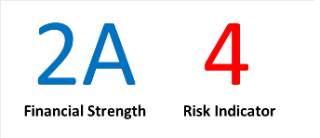Welcome to the Dun & Bradstreet Ratings Guide
This guide provides detailed explanations of the rating components as they apply to each market around the globe. D&B scores and ratings help you identify organizations that are likely to fail or pay late. This helps you to drive growth and increase profitability by:
- Allowing automated decisions for increased efficiency, which will free up valuable resources to focus on more important decisions
- Enabling more consistent decisions across the entire organization
- Applying scores across an entire portfolio to quickly identify risk and opportunity
- Allowing faster processing of large volumes of transactions
About the D&B Rating
The D&B Rating provides a quick and clear indication of the credit-worthiness of an organization, which helps you to identify profitable opportunities for growth, and risks that could affect bad debt and cash flow. It is a multi-dimensional risk assessment tool that is comprised of two parts.
The first part indicates the size of the company and is referred to as the Financial Strength Indicator or the Rating Classification. This component indicates the size of the company and is based on net worth, issued capital or number of employees. It is based on a company's tangible net worth derived from the latest financial accounts. Refer to the tables in each country to see the relationship between the Financial Strength indicator and an organization’s tangible net worth.
The second part estimates overall credit standing of the company or predicts the likelihood of failure. In some markets it is known as the Risk Indicator, while in others it is known as the Code Condition or the Composite Credit Appraisal. In North America and in markets where D&B Failure Score is unavailable, this component is a descriptive measure based on company specific attributes available within D&B records such as financial statement data, public records, business management and others. In markets where D&B Failure Score is available, it is predictive in nature and is derived from the Failure Score.
Risk Indicator is derived from the D&B Failure Score but also takes into account expert rules and overrides. To generate the Risk Indicator the D&B Failure Score is combined with expert rules such as:
- Minimum Data - To identify trading activity and provide substance for the score
- High Risk Parent - High Risk of a parent cascades down through the corporate family tree so that subsidiaries are also marked as High Risk
- Detrimental Legal Events - In addition to failure events (for example; meeting of creditors, administrator appointed, bankruptcy, etc.) Detrimental Auditors Reports will also automatically mark the subject organization as High Risk
- Possible Fraudulent Activity - Our team of Severe Risk Specialists identify potential and actual fraudulent businesses and individuals. Customers are then warned and Scores / Risk Indicators are removed or shown as High Risk
- Manual Overrides - Scores and Risk Indicators can be adjusted by authorized experts to reflect non statistical or catastrophic events

In the example above, which is for a company located in the United Kingdom, the D&B Rating indicates an organization with tangible net worth between £1,500,000 and £6,999,999 and a high risk of failure.
